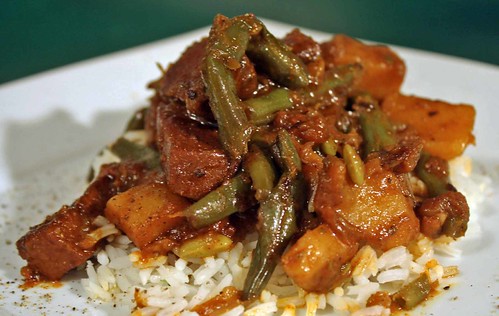Albanian Food

While corn is the mainstay of the Albanian food, Cottage industries and increase in crop yields, such as rice, are slowly raising the general living standard. Progress is being made in medicine (control of diseases), agriculture (irrigation and diversity), and literacy. Cultural influences include Italian, Greek, Turkish, and more currently, Russian.
Accustomed to authority and foreign domination, the Albanian's insecurity is most evident in many of the mountain villages, where the dwellings are so cleverly camouflaged as to be indistinguishable from the native trees and rocks, providing them with a sense of security especially in turbulent times. Past struggles, pain, and injustices press into the present, combining to make the Albanian's life difficult and insecure. In 1997, complaints of widespread fraudulent financial schemes affecting thousands of families caused serious violence and looting. Famine, illiteracy, malaria in the marshlands, and alcoholism plague the people. Yet troubles still dog the republic.
Moreover, by 1993, 90 percent of farming had been privatized. They gained some strength from the 1990 ruling that permitted private religious practice. It was said that with the establishment of a socialist republic under Hoxha in 1946, Albania became "one of the world's most thoroughly totalitarian states." More recently, Albanians have struggled through the difficulties inherent in an emerging democracy. They suffered through the 400-year domination of the Turkish Empire, when farmers were serfs to the sultan, and through the Communist period, when farmers were serfs to the state. The people of Albania, mostly engaged in pastoral and agricultural pursuits, barely eke out an existence from their harsh, rocky land.
Accustomed to authority and foreign domination, the Albanian's insecurity is most evident in many of the mountain villages, where the dwellings are so cleverly camouflaged as to be indistinguishable from the native trees and rocks, providing them with a sense of security especially in turbulent times. Past struggles, pain, and injustices press into the present, combining to make the Albanian's life difficult and insecure. In 1997, complaints of widespread fraudulent financial schemes affecting thousands of families caused serious violence and looting. Famine, illiteracy, malaria in the marshlands, and alcoholism plague the people. Yet troubles still dog the republic.
Moreover, by 1993, 90 percent of farming had been privatized. They gained some strength from the 1990 ruling that permitted private religious practice. It was said that with the establishment of a socialist republic under Hoxha in 1946, Albania became "one of the world's most thoroughly totalitarian states." More recently, Albanians have struggled through the difficulties inherent in an emerging democracy. They suffered through the 400-year domination of the Turkish Empire, when farmers were serfs to the sultan, and through the Communist period, when farmers were serfs to the state. The people of Albania, mostly engaged in pastoral and agricultural pursuits, barely eke out an existence from their harsh, rocky land.




No comments:
Post a Comment